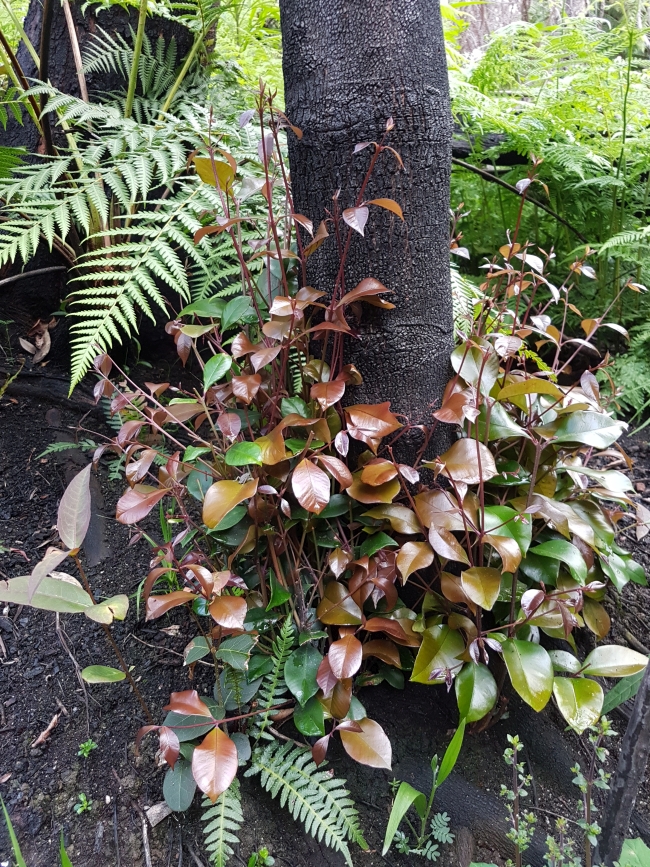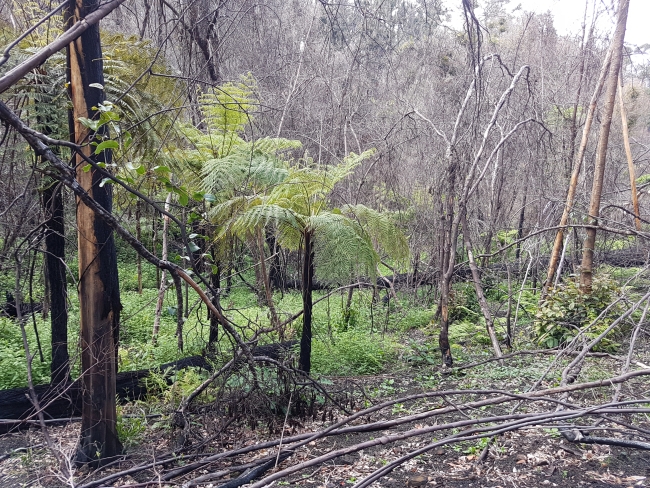During the summer of 2019-20, bushfires burned around 6,300 ha of rainforest at high severity. This was approximately 18% of Victoria’s rainforests. These rainforests are remnants of the oldest extant vegetation in Australia and are sensitive to high-intensity fire.
A project led by ARI investigated the effects of the bushfires on different rainforest types in eastern Victoria. Comprehensive floristic surveys were undertaken across 13 rainforest sites to assess their recovery and condition, and to identify the major risks to rainforests in the post-fire period. Findings include:
- Recovery of rainforest structure and species composition was strongly related to local fire severity (i.e. high fire severity led to less recovery).
- The opening up of the canopy by fire has led to prolific germination of soil-stored seed. The understorey is currently dominated by short-lived species that are less common in unburnt rainforest.
- Recruitment of eucalypts into rainforest stands may lead to long-term changes in forest structure, including reduction or loss of some rainforest stands.
- Some rainforest stands have now been burnt twice in recent decades; this has significant implications for these slow to recover communities.
Other threats to rainforest condition observed include deer activity, weed invasion and gully erosion. However, the greatest long-term threat to our remaining stands of rainforest is a warming, drying climate, which may act directly through reduced rainfall, or indirectly through increases in the frequency and intensity of fire.


This project was funded through the Victorian Government’s Bushfire Biodiversity Response and Recovery program (Phase 1).
For more information contact: judy.downe@delwp.vic.gov.au
Page last updated: 10/11/22